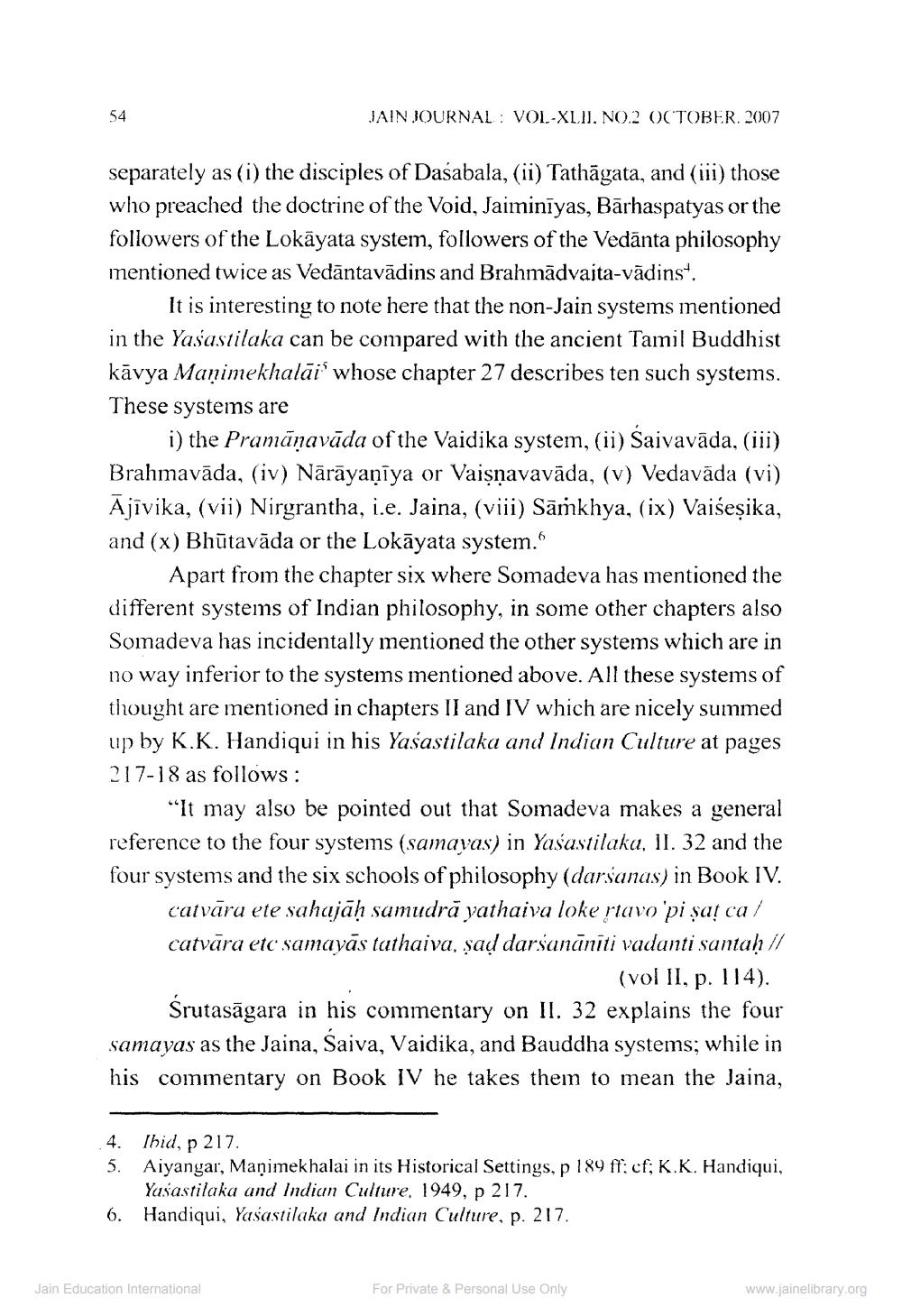________________
54
JAIN JOURNAL VOL-XLII. NO.2 OCTOBER. 2007
separately as (i) the disciples of Daśabala, (ii) Tathāgata, and (iii) those who preached the doctrine of the Void, Jaiminīyas, Bārhaspatyas or the followers of the Lokayata system, followers of the Vedanta philosophy mentioned twice as Vedantavādins and Brahmadvaita-vādins".
It is interesting to note here that the non-Jain systems mentioned in the Yasastilaka can be compared with the ancient Tamil Buddhist kāvya Maṇimekhalai whose chapter 27 describes ten such systems. These systems are
i) the Pramāṇavāda of the Vaidika system, (ii) Śaivavāda, (iii) Brahmavāda, (iv) Nārāyaṇīya or Vaiṣṇavavāda, (v) Vedavāda (vi) Ajīvika, (vii) Nirgrantha, i.e. Jaina, (viii) Sāṁkhya, (ix) Vaiseṣika, and (x) Bhutavāda or the Lokayata system."
Apart from the chapter six where Somadeva has mentioned the different systems of Indian philosophy, in some other chapters also Somadeva has incidentally mentioned the other systems which are in no way inferior to the systems mentioned above. All these systems of thought are mentioned in chapters II and IV which are nicely summed up by K.K. Handiqui in his Yasastilaka and Indian Culture at pages 217-18 as follows:
"It may also be pointed out that Somadeva makes a general reference to the four systems (samayas) in Yasastilaka, II. 32 and the four systems and the six schools of philosophy (darsanas) in Book IV. catvāra ete sahajāḥ samudrā yathaiva loke ṛtavo 'pi șat ca / catvāra etc samayās tathaiva, ṣaḍ darsanānīti vadanti santaḥ // (vol II, p. 114).
Śrutasagara in his commentary on II. 32 explains the four samayas as the Jaina, Śaiva, Vaidika, and Bauddha systems; while in his commentary on Book IV he takes them to mean the Jaina,
4. Ibid, p 217.
5.
Aiyangar, Manimekhalai in its Historical Settings, p 189 ff: cf; K.K. Handiqui, Yasastilaka and Indian Culture, 1949, p 217.
6. Handiqui, Yasastilaka and Indian Culture, p. 217.
Jain Education International
For Private & Personal Use Only
www.jainelibrary.org




